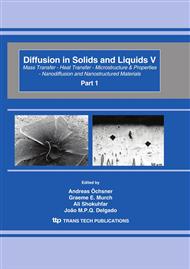p.1306
p.1312
p.1322
p.1328
p.1334
p.1340
p.1346
p.1354
p.1362
Effects of Combined Surface Modification on Adhesion Strength of CrN Coatings for STS420
Abstract:
In order to improve the durability and performance of molds and tools, diverse methods of surface modification are used where the adhesion strength between a substrate and coating plays an important role. To improve adhesion strength, a combined surface modification method is often utilized. In this study, adhesion strength and microstructure of various combined surface modifications (i.e., ion-nitriding, Cr intermediate layer, CrN layer and nitrogen ion- implantation) were examined on STS420. Phase constituents, microstructure, adhesion strength and hardness of coating-substrate system with combined surface modification were examined by using optical microscopy, X-ray diffraction, transmission electron microscopy, scratch test, and nano-indentation. The highest adhesion strength was observed when CrN coating was formed by nitrogen implantation on ion-nitrided substrate with a Cr-intermediate layer. Influence of processing sequence and combination is related to microstructural observations and adhesion strength.
Info:
Periodical:
Pages:
1334-1339
Citation:
Online since:
April 2010
Authors:
Keywords:
Price:
Сopyright:
© 2010 Trans Tech Publications Ltd. All Rights Reserved
Share:
Citation:


